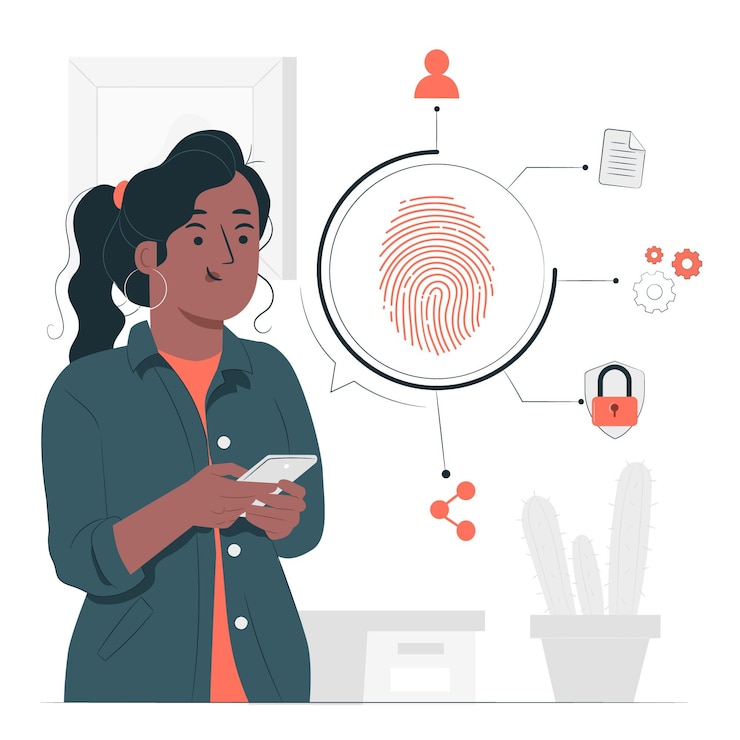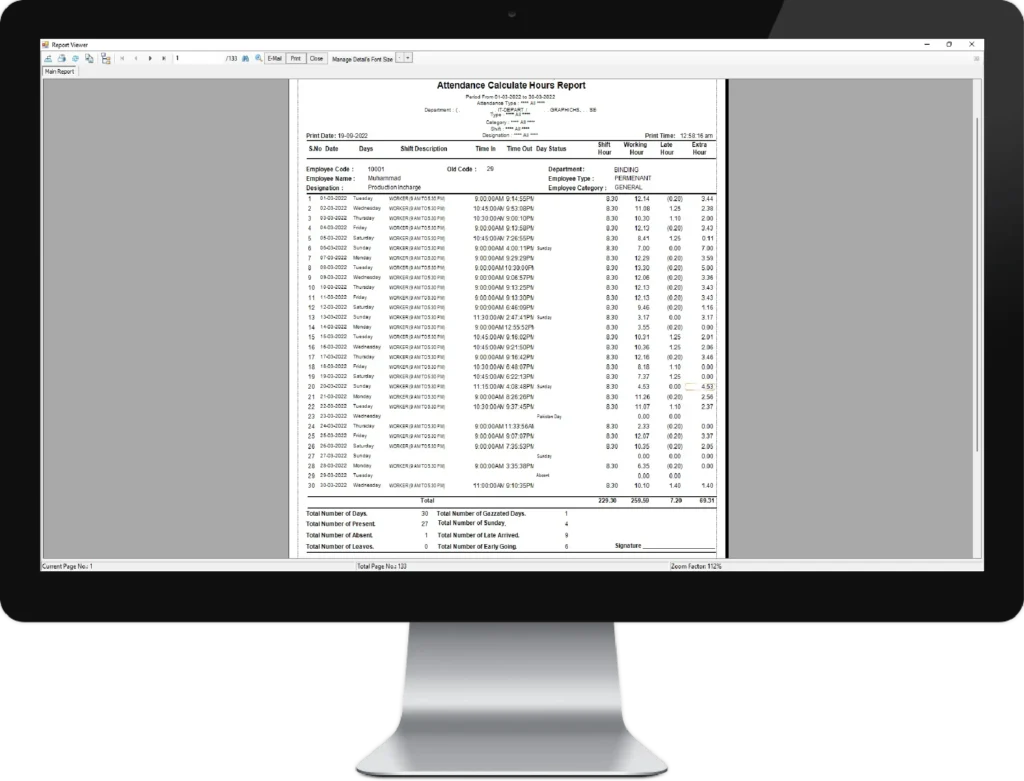Attendance management system that empowers your team
Say goodbye to time-consuming Excel spreadsheets and welcome to a more effective way of managing staff attendance. With our attendance management software, you can generate analytical insights, regularize attendance, and enable your on-site and remote staff to check in from anywhere.
Provides insight into employee absence and attendance statistics.
Tracks operating hours.
It simplifies payroll computation.
Assembles useful info for better decision-making
Request a Free Consultation

Attendance by biometrics
If you have a large staff with specified clock-in and clock-out times, biometric attendance is ideal. A contact centre, for example, will have a nine-hour shift with over a hundred agents. By employing the employee’s fingerprint or other personal identity for attendance authorization, biometric technology removes the possibility of fraud.
- Employee Details
- Employee Profile and Several Other Employee Reports
- Reports on overtime, late arrivals, and early departures.
- Schedule changes and rule-based penalties
- Schedule changes and rule-based penalties
- A one-window system that includes a full attendance module as well as an integrated biometric and biometric scanner.
- Support for several shifts and an attendance register
- Department-specific shift scheduling and daily attendance reports
- Detail of late arrival and early departure.
- Summary of attendance and absences by department.
- Above Data Collect from Efro tech


Empower your employees
With real-time information on staff absences, you can plan more effectively. With IP and location-based attendance marking, you can keep your mobile workforce nimble. Enhance employee involvement by allowing them to check-in through the online and mobile app, see their attendance, and submit requests for regularization
User-friendly settings
ISF’s employee’s attendance software includes several options that may be tailored to your organization’s specific requirements. You may choose your attendance policies to be tight or lax, and you can design the system to capture data such as tardy workers, overtime workers, and more. These adjustable options allow you to tailor the experience for your staff.


Scheduler of absences
Checking attendance and converting leaves can be time-consuming, especially if your organization is huge. Our absence planner helps relieve you of the strain of converting absences into days off. This, like the other parameters, is adjustable and may be activated at a certain time.
Configuration of pay periods
With ISF’s attendance software for employees, you can establish pay periods for different locations, specify the pay period cycle, and choose the payroll processing date. Working hours are also used to compute an employee’s remuneration.


Permissions
The admin may monitor attendance data, remaining time, and allow or restrict particular capabilities, such as web check-ins, using the permissions option. Admin can also specify how to compute total work hours based on the number of check-in and check-outs, depending on the mode of assessment chosen.
ISF’s employee attendance monitoring system may be integrated with a variety of APIs and can also be used in conjunction with biometric devices for employee check-in and check-out. It may be used with a time tracker to allow employees to categorize their daily, weekly, and monthly work hours as billable or non-billable, making payroll calculations easier.
Create reports
Obtain attendance reports for your company. Create and utilize attendance reports to see important patterns within your teams, departments, and locations, such as which employees are frequently early birds or late arrivals. These reports provide an analytical breakdown of documented attendance and work hours.


Time clocking in and out
Employees should be able to clock in, register break intervals, and clock out at the conclusion of the workday using magnetic card readers or customized phone numbers, which is a need for attendance management. Card readers are advantageous because they decrease the possibility of fraud or “proxy” clocking in.
Leave administration
Leave management is another area where your attendance management system should play a role. A missing day should not be recorded as “absent”; instead, the employee should be notified to apply for leave or make any specific attendance demands (such as half-day).


Integration of payroll
If your attendance management system is linked to the payroll System, pay is computed based on time worked, after reconciling any allowed leaves or paid time off (PTO). Remember that this does not just apply to daily payroll. A really helpful piece of software will also handle hourly wages and flexible payments.
Reporting
Keeping track of employee attendance is a critical HR obligation in every firm. Basic report creation should be offered in an exportable report format, such as the number of hours, overtime, missing days, and so on.


Missed clock-in notifications
Employees frequently forget to clock in after taking a break or skip clocking out in a haste to leave at the end of the workday. Managers/employees will be notified of these abnormalities via automated notifications, which will urge prompt action.
FAQs
An attendance management system is any solution that aids in monitoring an employee’s time spent at work. Interestingly, this does not have to be a digital tool; paper registers, time clocks, and Excel-based spreadsheets are examples of traditional attendance management techniques. However, with technology growing at breakneck speed and corporations considering huge, remote workforces, attendance tracking technologies must keep up.
To run successfully, a company must be able to rely on its staff to be present and functional. This attempt is hampered by excessive absenteeism.
But, more significantly, without a tracking mechanism and any sort of deterrent for repeat violations. It is also critical to get rid of people that consistently underperform. Otherwise, individuals who are punctual and show up every day believe they are following the rules for little gain because there is no obvious penalty for disobeying the rules.
Attendance Management Systems allow you to properly quantify the hours your employees work. This is especially useful if your staff are paid on an hourly basis. You must be able to compute the actual compensation owed to your employees.
The Advantages of Using attendance management software are:
- Workflow Management is simple.
- Workplace that is paperless.
- Tracking in real time.
- Data that is trustworthy.
- Increasing Productivity.
- Keep the Company Culture.
- Personalized and adaptable.
- Cost-Effective.
The student attendance management software monitors students’ punctuality, retention, and attentiveness, eventually assisting them in meeting their future academic goals. It is a third-party system that communicates students’ daily attendance to their parents via app notification, SMS, or email.
Now consider the advantages of the student attendance software for employees:
- Maintain an accurate attendance sheet with out and in timings.
- It is simple to keep track of student leave details.
- Track Student Old Attendance Records Easily
- Conserve the time of the teacher
- Increase students’ punctuality
- Attendance by face and fingerprint